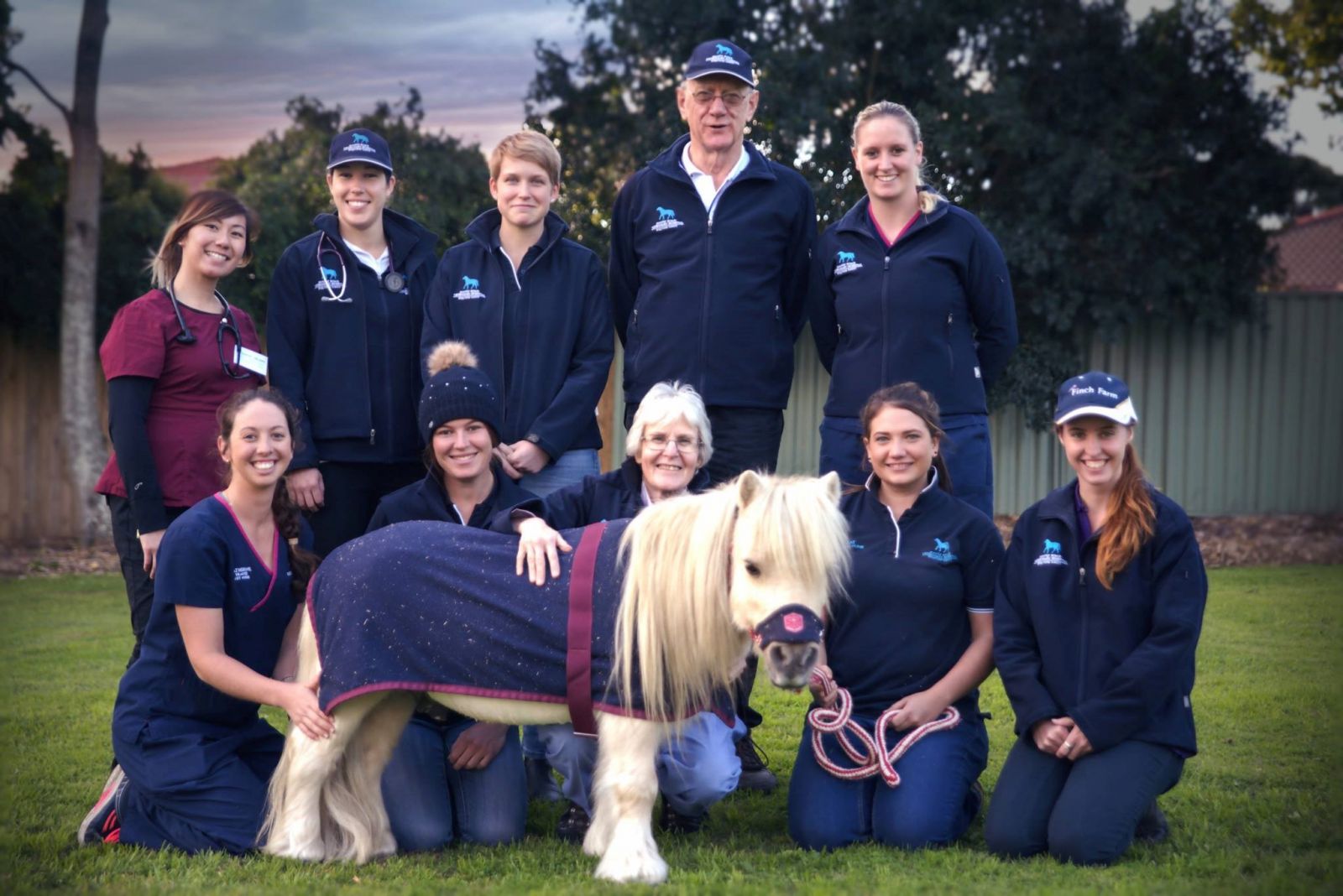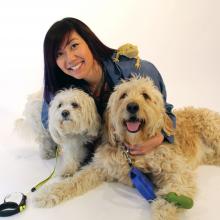I’ll always be a smallies girl (small animal vetmed) at heart. I’ve always loved everything about it. I never thought I could feel such excitement over anything other than small animal medicine. But boy did I get a rush today. Today I observed my first equine surgery and I was fortunate enough for the opportunity to scrub in and assist as well!
Equine surgery is similar to small animal surgery, but there are still certain core dynamics that make it different and exciting. Surgical tables for horses have to be a certain size in order to accommodate for their large frames. But just as there are variations in the size of dogs, there are also variations in the size of horses. And today’s horse was a pony! So you can imagine what it would look like; putting a relatively small 300-pound pony onto a table that is able to support the weight of a 2,500-pound horse. The surgical table was huge in comparison to what I was used to. Once we had sedated, induced, and intubated the pony, it was placed in dorsal recumbency (belly up) closest to the surgeon and propped up with towels/sandbags. The assistant surgeon in a small animal surgery simply stands on the opposite side of the table from the primary surgeon and the animal is equidistant in space between the primary and the assistant surgeon. But with a pony on a large table, you can imagine that by putting it as close to the primary surgeon as possible, then that means that standing on the other side isn’t sufficient if I even wanted to be of any use at all, let alone be able to reach anything. And so, I was told to hop up onto the surgical table onto my knees and spend the duration of the surgery in that position. And I loved every second of it!
Snickers presented with signs of colic and extreme bloating. After an examination by the equine vet and an abdominal ultrasound, it was suspected that he had a displacement colic caused by a rotation of the colon/cecum, as well as a potential impaction colic. Possibly due to an aggregation of undigested feed.
 We immediately went into emergency surgery to decompress the colon, rotate it back into place, and remove the impaction. This is a photo of us post-decompression and currently flushing out the colon in order to milk out the impaction. The impaction turned out to be a ball of undigested grass and feed approximately the size of a baseball.
We immediately went into emergency surgery to decompress the colon, rotate it back into place, and remove the impaction. This is a photo of us post-decompression and currently flushing out the colon in order to milk out the impaction. The impaction turned out to be a ball of undigested grass and feed approximately the size of a baseball.


By the end, my legs were jelly, and I had intestinal juices (mixed with saline) all over the lower half of my body and soaked into my shoes. But that didn’t take away from the experience: it was absolutely amazing.
Walking into the equine theatre (that’s what the surgical suite/operating room is called in Australia) was such an exhilarating feeling: the nervousness of participating actively in a procedure for the first time, as well as the pressure to make sure that I performed to mine and the vet’s satisfaction, in addition to the nagging fear of embarrassing myself if I failed. And I know what my family and friends say and have said countless of times. “Don’t sell yourself short.” But it really is hard not to think that way. In reality, being a veterinarian means that you are committing to learning for the rest of your life. It’s impossible to know everything, and that’s not an over-exaggeration. It is physically impossible to know everything about every living species. And that’s okay. We use our experiences thus far, to push us through the uncertainties.
For everything that I wasn’t sure of in regards to equine protocol and surgery, my small animal experience pushed me through. I found habits that I had developed over the last few years putting me on autopilot as I scrubbed and maintained a sterile frame of space around myself, while the other part of my brain was working double time to try to follow the procedure and committing the steps to memory. Because regardless of whether or not I intend on practicing large animal medicine, skills learned in all fields are useful to the practicing of comparative veterinary medicine. No matter how different each species is, there are many similarities at their core. Not to mention that it’ll be extremely useful for my upcoming NAVLE (North American Veterinary Licensing Exam), where you are required to answer questions on all species regardless of your stream.

Here, we are suturing the portion of the colon that was opened in order to remove the impaction.

And this is how I learned yet another lesson here at MRVH. There will always be ways to experience new and exciting things, so it is important to grasp the opportunity when it arises. And that’s just it. No matter how intimidating the more experienced veterinarian is or how uncomfortable/unconfident you may feel, the fact of the matter is that you made it into vet school and you made it to your final year. The mentoring vet is just a person; not some scary and almighty being, but someone that someday, I aspire to be as well. They’re not scary; they’re just people and at one point in their lives, they probably felt just as uneasy as I do about being unleashed upon the world as a new grad. A doctor. A veterinarian. Someone that is responsible for their patients’ lives… And I can’t wait!
And thus a few weeks later, we said goodbye to Snickers: happy and healthy and literally half the size. Wishing you all the best Snicker doodles!


